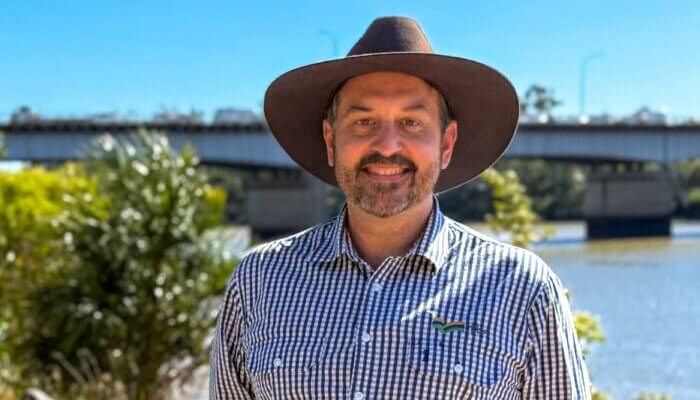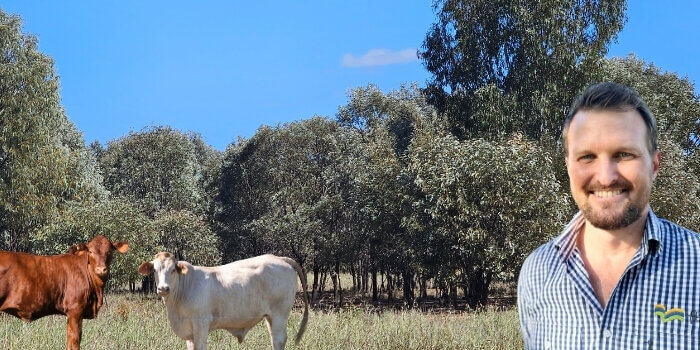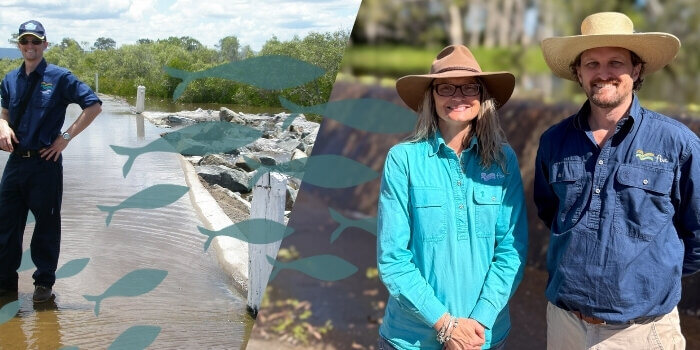
New Project Uncovers Broader Range of Endangered King Blue Grass
Posted on June 16th, 2025
An exciting project that aims to improve the understanding of King Blue Grass (Dichanthium queenslandicum) and fill knowledge gaps is already yielding promising results, with FBA discovering the endangered native grass is more widespread than previously thought.
Environment Coordinator Hannah Kaluzynski, alongside other FBA staff, has conducted targeted species surveys for King Blue Grass in the Central Highlands and Isaac regions. Surveys have primarily focused on National Parks, reserves, roadside areas and grazing land in Clermont, Dysart, Rolleston and Springsure.
Hannah said they discovered King Blue Grass in Peak Range National Park at Wolfang, located between Moranbah, Clermont and Dysart, an area where the vulnerable species was predicted to grow but had never been confirmed.
“No one has ever surveyed the area for it before, and we were able to confirm its presence,” she said.
“We’re learning there’s likely more King Blue Grass out there than we previously thought.”

King Blue Grass is a perennial grass that has experienced a significant decline in its distribution since European settlement. The species plays a vital role in maintaining grassland ecosystems by supporting biodiversity, stabilising soils, and providing habitat for native fauna.
There is significant uncertainty within the research community about the status of King Blue Grass across much of its known range, which extends from Biloela, west to Rolleston, Springsure and Emerald, and north to Clermont, Moranbah and Nebo within the Fitzroy region.
FBA is leading a working group of key scientists from Astrebla Ecological Services, Department of the Environment, Tourism, Science and Innovation, Hansen Botanical Assessments (HBA), Queensland Herbarium, Threatened Plant Network Queensland and the University of Queensland on a two-year project to address knowledge gaps on the status, population trends and distribution patterns. This will be achieved through workshops with knowledge experts, targeted species surveys, engaging local land managers, and seed collection, which are funded under the Australian Government Saving Native Species Program. The outcomes will support more effective conservation strategies for this vulnerable species.

SURVEYING THE SPECIES
Surveying King Blue Grass involves walking along ground transects, which are long lines that are set up within a 50m by 20m plot and repeated across multiple areas and used to make observations and collect data.
“We are looking at whether King Blue Grass is present, what growth phase it is in and what other vegetation is present,” Hannah said.
“This method is effective for locating and identifying the species.
“If we don’t know where the species is we can’t implement actions or management to ensure it persists and thrives.”

The remaining surveys are to be completed on private grazing properties, with soil testing also planned to indicate the species presence.
“It is expected that by surveying properties under different grazing management regimes that we will gain a greater understanding of King Blue Grass and its ability to persist in a grazing setting,” Hannah said.
FBA has collected King Blue Grass seed through this project and stored it at Native Plants Queensland Seed Bank.
Hannah said that while surveys are increasing FBA’s knowledge of where the species is, it was still too early in the project to draw strong conclusions about King Blue Grass’s status, population trends, or distribution patterns.
“Once we complete the baseline surveys, we’ll sit down with our Technical Advisory Group and discuss any potential survey method improvements before conducting follow up surveys next financial year,” Hannah said.
As an add-on to the Saving Native Species project, FBA is using a drone to capture imagery of King Blue Grass to assist with future surveying.
Hannah said drone imagery has been captured over transects where King Blue Grass has been identified. The images will be sent off to a company that compiles the photos and develops the AI from them, with the aim that a drone can be sent over a field and detect whether the species is there, more cost effectively.
“However, this is still in development and testing. We won’t have that information until later down the track,” she said.

Boobook Ecological Consulting Botanist Rosamund Aisthorpe, who was contracted by FBA to capture drone imagery of King Blue Grass, said this technology holds immense potential.
“While drones and AI have been around for a while, applying them to identify grass species is new,” she said.
“By training the AI to identify specific sites, we can gain a deeper understanding of the distribution of King Blue Grass and develop a reliable method for monitoring the species.
“This technology is available now. We should embrace it.”
This project is funded under the Australian Government Saving Native Species Program and delivered by FBA.









